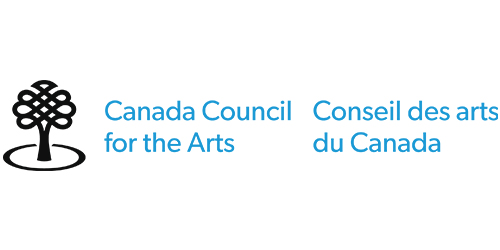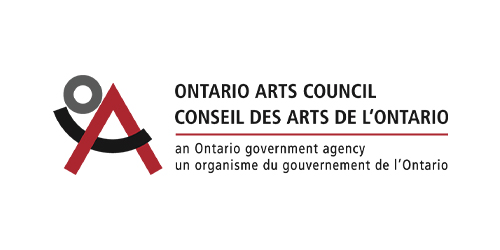Jump to full program notes by Avi Stein
Avi Stein, guest director
Live performances:
September 23, 2022 at 8pm at Jeanne Lamon Hall, Trinity-St. Paul’s United Church
September 24, 2022 at 2pm at Jeanne Lamon Hall, Trinity-St. Paul’s United Church
Program
| George Frideric Handel 1586–1759 | Concerto grosso in B-flat Major, op. 3, no. 2 (1734) Vivace – Largo – Allegro – Vivace – Allegro |
| Henry Purcell 1659–1695 | Suite from The Fairy Queen (1692) Prelude – Hornpipe – Air – Rondeau – Jig – Dance for the Green Men – Air – Prelude – Monkey’s Dance – Chaconne |
| Allen Whear 1957–2022 | Short Story (2006) |
| Francesco Geminiani 1687–1762 | Concerto grosso in E Minor, op. 3, no. 3 (1755) Grave / Allegro moderato – Adagio – Allegro moderato |
Intermission
| Johann Sigismund Kusser 1660–1727 | Suite no. 1 from Festin des Muses (1700) Ouverture – Rondeau – Gigue – Passepieds – Air – Autre Air – Chœur |
| Pieter Hellendaal 1721–1799 | Grand Concerto in F Major, op. 3, no. 2 (1758) Ouverture – Affettuoso – Presto – Borea |
| G.F. Handel | Concerto grosso in G Major, op. 6, no. 1 (1739) A tempo giusto – Allegro –Adagio – Allegro – Allegro – Chaconne (from Terpsicore) |
Tafelmusik Baroque Orchestra
Violin I
Julia Wedman, Geneviève Gilardeau, Johanna Novom, Christopher Verrette
Violin II
Cristina Zacharias, Patricia Ahern, Louella Alatiit, Chloe Fedor
Viola
Patrick G. Jordan, Brandon Chui
Violoncello
Keiran Campbell, Michael Unterman
Double bass
Francis Palma-Pelletier
Oboe
John Abberger, Marco Cera
Bassoon
Dominic Teresi
Harpsichord/Organ
Avi Stein, Charlotte Nediger
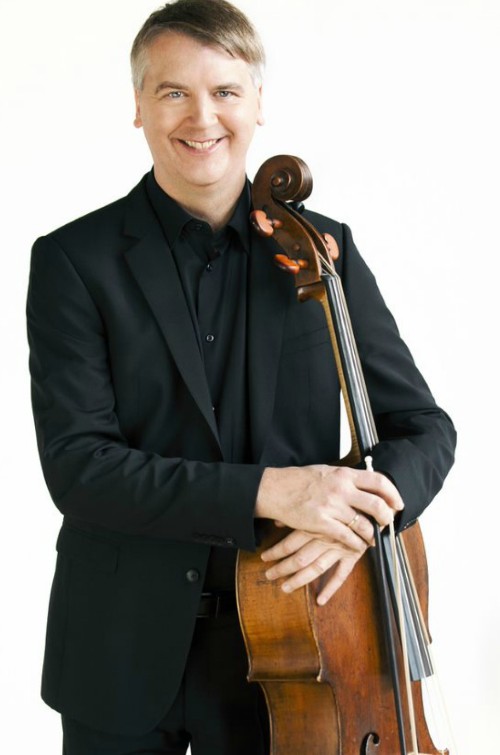
Allen Whear
Cellist Allen Whear started performing with Tafelmusik in 1994, and joined as a full-time member in 2000. In February 2022, we heard the heartbreaking news that Allen had died of cancer. Allen lived and breathed music, and his musical adventures occasionally included composition. In 2006, Music Director Jeanne Lamon asked Allen to compose a short piece for the orchestra. He titled it Short Story, and his program note on the piece follows. Allen refers to musical memories, and in playing Short Story we hear his voice again, and the music inspires memories of our dear friend and colleague.
Allen Whear’s Notes on Short Story
When Jeanne Lamon first approached me about writing a new piece for Tafelmusik, we had just finished touring a program that ended with Purcell’s Chaconne from The Fairy Queen. This is one of those tunes that sticks with you as you leave the concert hall.
We all process musical memories in different ways; melodic fragments can repeat themselves endlessly in your mind (sometimes annoyingly), or else they can be encouraged to evolve into something quite different as they merge with music of diverse styles and influences. This was the starting point for my piece, Short Story. While it is not a theme and variations per se, certain motives from the melody or from the bass line of the Purcell—some only two or three notes long—are the basis of a fantasy which explores this fragmentation and synthesis of musical memories.
Program at a Glance: Handel’s London
by Charlotte Nediger
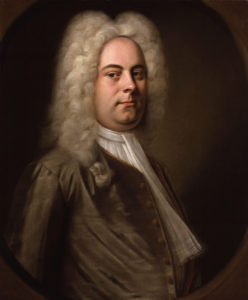
George Frideric Handel
Born in Halle, Germany, in 1685, Handel was an accomplished keyboard player and aspiring composer when he left for Italy in 1706 at age 21. The young Saxon impressed audiences and patrons, and a few years later he took his newfound love of Italian opera to London. The English audiences loved Handel, and loved his operas, inspiring Handel to take up permanent residence in London.
What are we playing?
Handel’s London is framed by two of Handel’s concerti grossi (literally “big concertos” for full orchestra), one each from two collections published in the 1730s: Opus 3 & 6. They were among the pieces performed between acts at Handel’s oratorio performances, and were popular enough to be reprinted numerous times. Many of the concertos were assembled from movements Handel had written previously: operas, anthems, etc. It is fitting, then, that Avi Stein has added an extra movement to the first concerto from Opus 6, a chaconne that Handel had used in various settings: in the opera-ballet Terpsicore/Il Pastor Fido, in a trio sonata for 2 violins and continuo, and in the serenade Il parnasso in festa (with singers added).
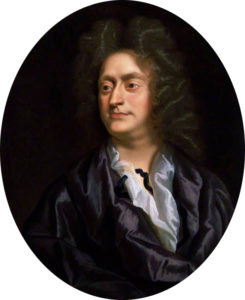
Henry Purcell
The only native Londoner on the program, Henry Purcell was nicknamed “The British Orpheus.” During his short life (he died at age 36) he developed a unique and quintessentially English sound and style in a steady stream of vocal, choral, and instrumental music. He also wrote a large quantity of music for the theatre, the “movie music” of his time.
Did he meet Handel?
No. Purcell was of the previous generation, and died when Handel was just 10 years old. If Purcell had lived longer, they would certainly have met in London, and what a fascinating meeting that would have been! In the 1750s Handel wrote of his own music, “If Purcell had lived, he would have composed better music than this.” Coming from a man who was known to think highly of his own work, this is high praise indeed.
What are we playing?
Purcell’s “soundtrack” for The Fairy Queen (an adaptation of Shakespeare’s A Midsummer Night’s Dream) includes a wealth of instrumental music, from which Avi Stein has assembled a selection. The references to green men and monkeys might have surprised Shakespeare … they were part of an elaborate masque (play within a play) conjured by Oberon.
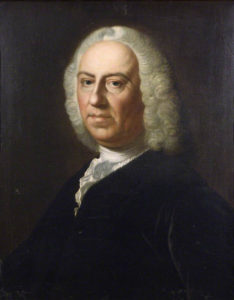
Francesco Geminiani
In Geminiani we have a composer who’s familiar to players, but perhaps less familiar to audiences. Born in Lucca, Italy, in 1687, he studied with Corelli. He left Italy for London in 1714, and enjoyed success as a violinist, teacher, and composer. He wrote an invaluable treatise for violinists, The Art of Playing on the Violin.
Did he meet Handel?
An emphatic yes! They were almost exact contemporaries, and probably first met in Rome, where they both studied. Geminiani arrived in London just a few years after Handel, and it’s said for his first performance before the king, he was accompanied by Handel.
What are we playing?
Geminiani published two sets of concerti grossi in 1732. Unusually, he republished them 23 years later, substantially reworked: “modernized” to suit a changing taste. We’ll be performing this later reworking of the third concerto of Opus 3.
Johann Sigismund Kusser
Also known as Jean Sigismond Cousser, and as John Sigismond Kusser, Kusser was born in 1660 in what is now Bratislava to Hungarian parents. When he was 14, the family fled due to religious persecution, settling in Stuttgart. He worked in various German cities and became known as a composer, director, and impresario of opera. He ended up in London in 1704, staying for just over two years before settling in Dublin. While in London, he paid his way in part as a private tutor. Dublin proved more profitable, but he maintained connections with London, composing for members of the royal family.
The German writer Johann Mattheson said Kusser was the ideal music director, combining strict discipline in rehearsals with “open-hearted cooperation,” and devotion to teaching both the talented and the less talented their parts.
Did he meet Handel?
It’s unlikely that they met in Germany: by the time Handel was of age Kusser was in the south of Germany. And Handel didn’t arrive in London until 5 years after Kusser left. Handel eventually spent some time in Dublin, but long after Kusser had died. So no, it seems very unlikely that they ever met. Did they hear each other’s music? Quite possibly …
What are we playing?
Much of Kusser’s music has been lost, but among the scores that survived is a set of 6 “theatrical” suites titled Festin des Muses, written in 1700, a few years before his arrival in London. They’re very much in the style of Lully, and are signed with his French name, Jean Sigismond Cousser.
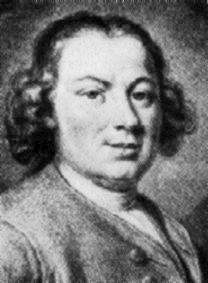
Pieter Hellendaal
The Dutch violinist, organist, and composer Pieter Hellendaal was born in Rotterdam in 1721, living variously in Utrecht, Amsterdam, and Leiden. Concert life in the Netherlands was somewhat limited, and in 1751 he moved to London, settling in Cambridge 10 years later. He successfully made a living as a violinist and organist.
Did he meet Handel?
Yes! He played in Handel’s production of Acis & Galatea in 1754, playing violin solos between the acts. Handel was 69 at the time—Hellendaal was 33.
What are we playing?
Hellendaal obtained a Royal Privilege to publish Six Grand Concertos op. 3 in 1758. Handel’s Six Concerti grossi op. 3 were published a quarter century earlier, and were undoubtedly the inspiration.
Program Notes
by Avi Stein, curator and guest director
“… We shall defend our island, whatever the cost may be. We shall fight on the beaches, we shall fight on the landing grounds, we shall fight in the fields and in the streets, we shall fight in the hills; we shall never surrender …”
Coming through the stuttering crackle of radio static like a beacon piercing the mist over the cold waters of the English Channel, these iconic words, spoken in clipped rhythms and a high-pitched tenor, have become the soundtrack for one of history’s great epics. Winston Churchill’s speech in the winter of 1940 can be seen as one moment in a long national narrative of the island nation standing apart under looming threats from continental invaders. Running through the pages of this history, the waves of the English Channel have steadfastly acted as a defensive wall, paid for with the lives of Spanish, French, and German would-be invaders. But as with all patriotic myths, many corners have had to be rounded and edges sanded in order to maintain a consistent thread of bold independence by this New Jerusalem in England’s green and pleasant land.
In the wake of another thwarted invasion by the famed Spanish Armada of 1588 lies another illustrious set of words. In stark contrast to Churchill’s evocation of the heroic acts of a cloistered island, we have John Donne’s motto: “No man is an Island.” On the page between this oft-quoted invocation and the tolling bells that inspired Hemingway’s Spanish chronicle stands the forgotten center of this metaphor: “if a clod be washed away by the sea, Europe is the less, as well as if a promontory were …”
England’s historic connection to the continent consists as much of successful invasions that have long since been forgotten as it does of those that were repelled. In fact, what is often told as the beginning of this national legend, the 11th-century invasion by William the Conqueror, is only one of several successful foreign conquests that have been repurposed to fit neatly within the story England tells of itself. William, King of the Normans, was of course French, as was Louis VIII whose brief reign in the 13th century was connected with the creation of the Magna Carta, that greatest of English written proclamations. The century after the monumental defeat of the Spanish Armada witnessed the ascent of three separate foreign kings to the English throne. The Restoration that ended Cromwell’s commonwealth in the 17th century may have brought back the Stuart Dynasty, but Charles II had spent many of his formative years in France, the Dutch Republic, and the part of the Netherlands under the control of Spain—all countries that were long-running enemies of England. Musically speaking, the reign of Charles meant a conquest of English styles by prevailing French and Italian trends. Only a couple of decades later, and after several bitter wars with the Dutch, England was invaded by William of Orange. He may have held the title Stadtholder of Holland, Zeeland, Utrecht, Gelderland, and Overijssel, but history remembers him as half of the pair of William and Mary, who became monarchs of England, Ireland, and Scotland in the so-called Glorious Revolution. English fear of Catholicism and a preference for any distantly related monarch that happened to be Protestant brought about the next royal dynasty, the Hanovers. The first in a succession of four kings named George spent the majority of his life as the Elector of Hanover, a German principality that also held the distinctly foreign name of Braunschweig-Lüneburg. (The result of this particular cross-channel migration can be seen across an even bigger body of water in nearby places named New Brunswick). Alongside this immigration of foreign nobility came an influx of continental musicians, including a man who had worked for George I while the king could still speak to his own subjects in his native German. This composer, Georg Friedrich Händel, born in central Germany only 100 miles from Johann Sebastian Bach, would become George Frideric Handel, the greatest English composer of his own time and arguably still.
If the questions of immigration and assimilation seem particularly relevant to our current day, then the musical picture of Handel’s London is uncannily similar to what one might read today. The scenes of crowded 18th-century coffee houses, serving what coffee novices of the time (or even today) described as “syrup of soot and essence of old shoes,” or because of its exotic Ottoman origins “bitter Mohammedan gruel,” while patrons pored over a plethora of publications recounting the city’s musical events, differ only in detail from what we now see firsthand: baroque powdered wigs and colourful coats peaking from behind broadsheets now replaced by vibrant tattoos and puffy beards reflecting the blue light of their phones over cups of triple shot, soy, nonfat, single origin, flat whites. These coffee houses witnessed a change in the concentration of musical patronage at elite institutions, such as the court or church, to more widespread consumption among the rising middle class. This followed a trend set in the previous century in the trading centers of Venice and Amsterdam and which produced early versions of many of the same kinds of musical organizations as we see today, such as public opera, the concert series, and widespread publishing for use at home.
The most visible influence by foreign styles was surely in the realm of opera, which was as precarious a commercial tightrope walk then as it is today. English theatre, of course, had its own storied tradition, and plays long contained their fair share of music, not least in the works of Shakespeare. However, fully sung opera only began to take a foothold in the early 18th century. At this time, various theatres sprung up under the names of Haymarket, Drury Lane, and Covent Garden (a name persists to this day for the current Royal Opera House). These promoted the works of a myriad of Italian composers, with imported divas in the limelight, the best known of which was Farinelli. These ventures were relatively short-lived, their fortunes being ruled by the same outside factors as today’s opera houses: a need for mass appeal, public taste for novelty, the enormous production costs, including top fees for star singers, as well as the business acumen of their impresarios. The most successful undertaking was by Handel, whose Italian credentials included three years in Rome (though his nickname while in Italy was il Sassone—the Saxon). Yet even Handel’s run of operas in Italian lasted roughly only a dozen years. The argument over whether one should sing in a foreign language or in English was a constant theme, prompting one impresario to write to Handel: “that you would resolute enough to deliver us from our Italian bondage; and demonstrate that English is soft enough for Opera, when compos’d by poets who know how to distinguish the sweetness of our tongue from the strength of it.” Handel did resolutely switch his output of theatrical works to English, though this required leaving the world of opera for a genre that was not staged and relied on biblical texts for its plots, the oratorio. Oratorios not only appealed to local taste by communicating their plots in the vernacular, but also tapped into the strong London tradition of the public concert series.
The practice of concerts for a general audience began in the mid 17th century during the civil war, when many of the country’s musical institutions fell apart. After the court of Charles I had been replaced by the commonwealth of Oliver Cromwell and Puritan tastes took over, the musicians who had previously been employed at the court’s musical ensembles and cathedral choirs went in search of new audiences and patrons. One Parliamentary ordinance from 1644 showed the orthodox zeal the Puritans had already carried over to their colonies in New England: “the better to accomplish the blessed Reformation so happily begun to remove all offences and things illegal in the worship of God, do Ordain … that all Organs, and the Frames or Cases wherein they stand in all Churches or Chapels aforesaid, shall be taken away, and utterly defaced, and none other hereafter set up in their places.” Some of these organs and those who played them set up shop in taverns. The writer who had already spoken ill of coffee described one of these new musical establishments: “We had heard of a famous Amphibious House of Entertainment, compounded of one half Tavern and t’other Musick-House … we no sooner enter’d the House, but we heard Fidlers and Hoitboys (oboes), together with a Humdrum Organ, make such incomparable Musick … we were Usher’d into a most Stately Apartment, Dedicated purely to the Lovers of Musick, Painting, Dancing.”For another witness, the hybrid nature of the surroundings were mirrored by the motley nature of the programs: “Here was consorts, fuges, solos, lutes, Hautbois, trumpets, kettledrums, and what Not but all disjoynted and incoherent for while ye masters were shuffling out & in of places to take their parts there was a totall cessation, and None knew what would come next; all this was utterly against the true Model of an entertainment, which [for] want of unity is allway spoiled.” These casual affairs codified over time, with advertisements in local papers, subscriptions, and larger audiences that prompted relocation to larger and more formal settings. The programs themselves evolved into a structure more akin to a modern concert, with concertos, overtures, and songs or opera excerpts arranged into two halves, and it was in one of these venues where Arcangelo Corelli’s pivotal concerti grossi, the models of classical proportion for the following generation, were first introduced to London audiences. The above spectator to the chaos of tavern concerts was surely enthusiastic at the initiation of Corelli’s elegant aesthetics to London, remarking that, “If musick can be immortall, Corelli’s consorts will be so. Add to this, that most of the young Nobility and Gentry that have travelled into Itally affected to learne of Corelli, and brought home with them such favour for the Itallian musick, as hath given it possession of our Pernassus. And the best utensill of Apollo, the violin, is so universally courted … that some say England hath dispeopled Itally of viollins.”
England had “dispeopled” Italy not only of violins, but of many violinists as well. The enthusiasm for the string compositions of Corelli was followed by London’s publishing houses issuing a myriad of collections by Geminiani, Carbonelli, Vivaldi, Matteis, Barsanti, Locatelli, Veracini, Cosimi, Castrucci, Tessarini, Amadei, Popora, Giardini, Visconti, and the Sammartini brothers, as well as many others from northern Europe such as Hellendaal, Pepusch, Galliard, Lampe, Finger, and Roman (who happened to be Swedish), all of whom had come ashore on the tide of Corelli, “The New Orpheus.” These new immigrants not only became part of the performing scene, but helped to organize it through newly founded musical societies. The most famous of these was the Academy of Ancient Music, a series that promoted the revival of the great repertoire of 16th- and 17th-century madrigals and sacred vocal works, since most concerts were almost exclusively devoted to new music. This idea of a classical canon of concert repertoire was a novel concept at the time, although within a couple of decades, it was Handel’s music that was the core of the ancient music, in opposition to the modern works now coming from Johann Christian Bach and Haydn. Among the founding members of the Academy of Ancient music was Francesco Geminiani, a former student of Corelli’s who had immigrated to London shortly after Handel. Geminiani had no trouble using his credentials as Corelli’s student to find patrons in London. He dedicated his Opus 1 collection of sonatas to his first patron, who in turn arranged a performance for Geminiani in front of the newly crowned King George, accompanied by another famous recent immigrant, Handel. Geminiani quickly integrated himself into London’s musical life and continued to pay tribute to his teacher, arranging Corelli’s solo sonatas as ensemble concertos as well as publishing original compositions which were judged to be exceedingly difficult. Although Geminiani’s ostensibly difficult personality caused several writers to leave us with disparaging anecdotes about him, one of the music history books of the time reported: “There being no master of the violin at this day living with whom he can with any propriety be compared … all the graces and elegancies of melody, all the powers that can engage attention, or that render the passions of the hearer subservient to the will of the artist.” Geminiani rarely took part in the growing public concert scene. It was said that he “was seldom heard in public during his long residence in England. His compositions, scholars, and the presents he received from the great, whenever he could be prevailed upon to play at their houses, were his chief support.” Several of Geminiani’s voyages are mentioned as being taken not only for musical reasons but in order to acquire paintings for resale. In fact, his main source of income seems to have come not as a musician but from his work as an art dealer. Geminiani’s wide range of interests is shown by the number of books he wrote about a variety of musical subjects. These range from treatises on violin technique to instruction manuals for accompaniment and the guitar, as well as general aesthetics in the Treatise of Good Taste in the Art of Musick, or his theoretical exploration of harmony.
A particularly cosmopolitan figure is Johann Sigismund Kusser, who in his lifetime crossed the entire span of Europe, having been born in what is now Bratislava and finally settling in Dublin where, like Handel, he anglicized his name. Kusser began his career in Germany, writing in the two dominant national styles of the day, Italian and French, the latter of which he might have learned from Lully, that monarch of French music, though as we have seen already, name dropping has proved to be a useful career move for more than one composer. Kusser was credited by one writer as having “introduced the new or Italian manner of singing to the Hamburg operas.” Coincidentally, a decade after Kusser’s residency, the Hamburg opera would host a young Handel. Kusser began his career in the British Isles in London, producing “several Entertainments of Singing in Italian.” The fruits of his remaining career in Dublin are scarce, as many of the manuscripts seem to have been lost, though librettos survive for large-scale works celebrating various royal occasions, such as the British monarchs’ birthdays, or brief respites from of the interminable military conflicts. Such works had been a staple of English composers from the time of Purcell through to Handel.
Assimilation changes the host country as much as the newcomer, and like the ubiquitous Palladian buildings of Georgian London, the impact of all those who crossed the Channel held sway in England for many generations to come. Handel, who never lost his thick German accent, wrote what is probably the most famous piece of music in the English language, Messiah. The Handelian style ruled over English music for the next century, not least through its greatest proponent, another cosmopolitan German visitor to England, Felix Mendelssohn.
Thank You to our Generous Donors
Tafelmusik is deeply grateful to our generous donors who have continued to support us through this challenging time. Your support has inspired us to remain strong and to deliver joy to our community through our music, and will enable us to persevere until we can once again perform live for you, our cherished patrons. Thank you for believing in Tafelmusik and in the power and beauty of music.
If you would like to make a gift, please click here or contact us at donations@tafelmusik.org.
Thank you to our government sponsors
